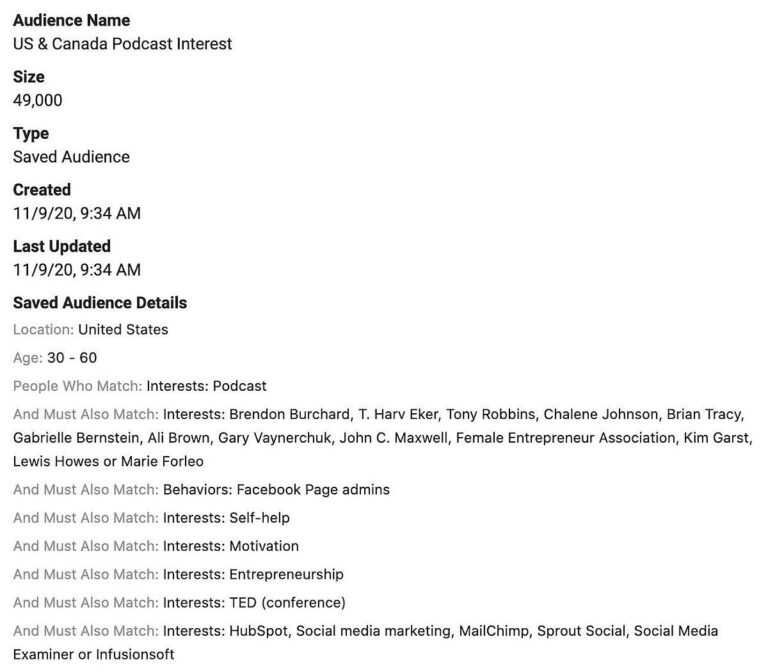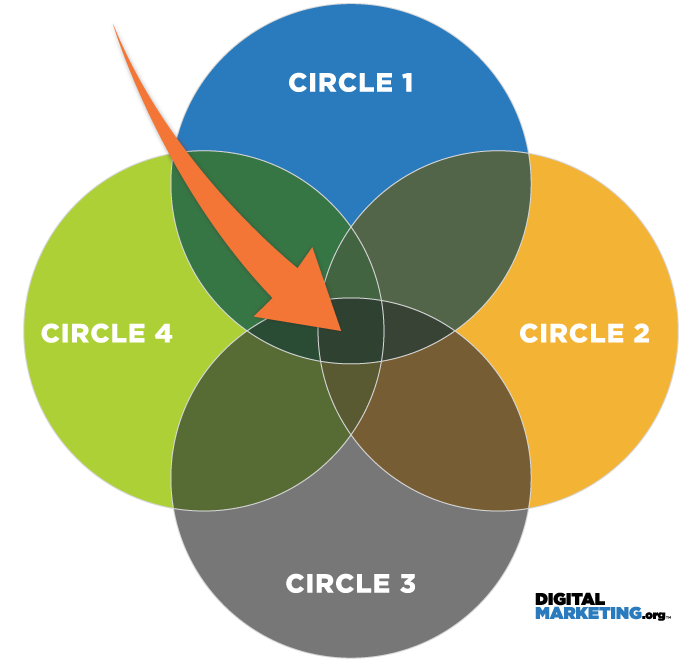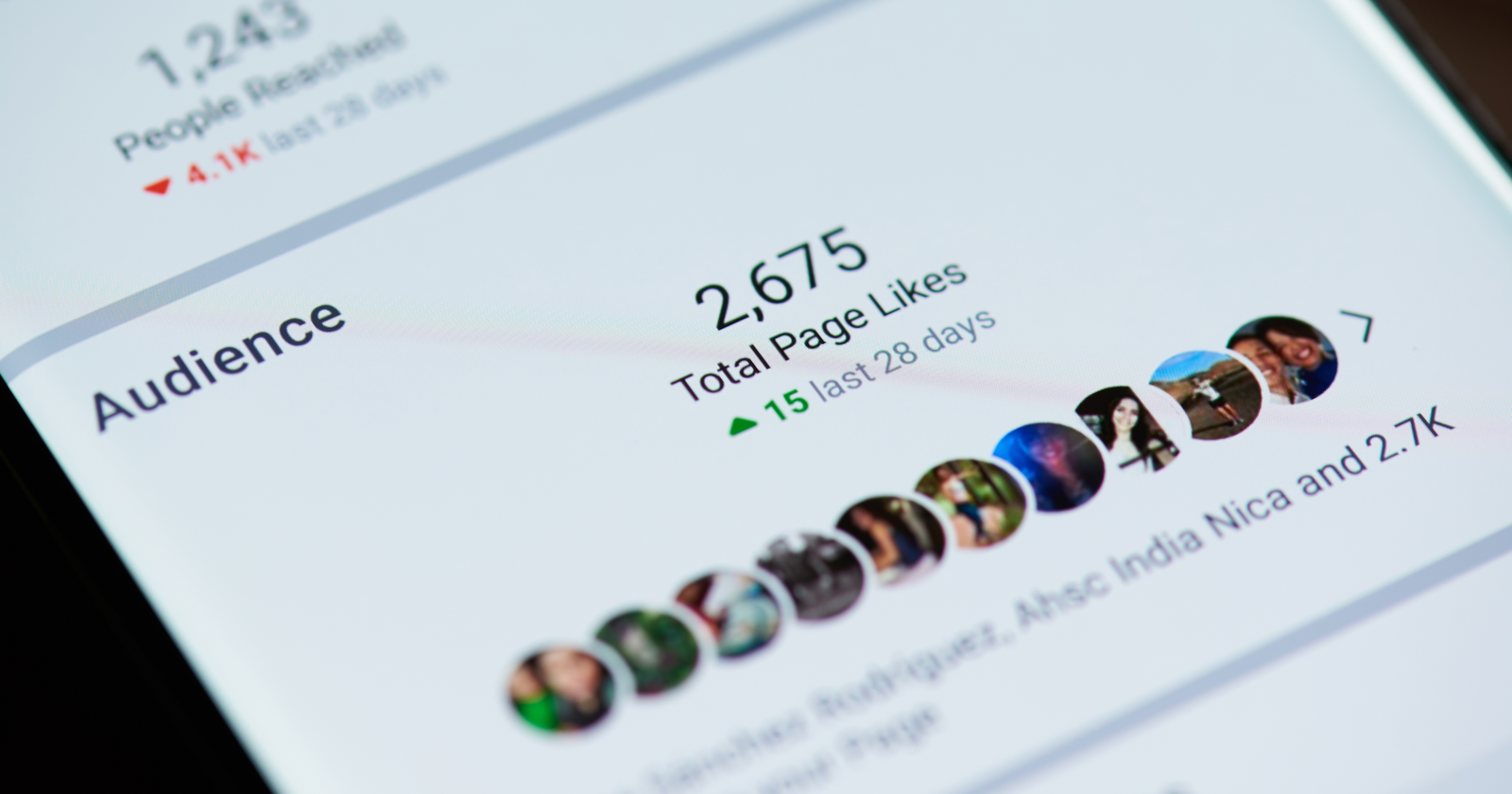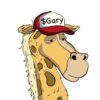Over 6 million businesses are using Facebook ads to get their message across, but few understand how to make Facebook ads work for them.
Without the right Facebook ad audience, they never meet their ideal customer where they are, leaving everyone unfulfilled.
If you want to get the most bang for your buck when advertising on Facebook, you need to learn how to target the right people at the right times with the right expectations.
In this post, I’ll show you how to dramatically lower your Facebook ad costs by crafting the perfect audience for your business or brand.
Once you have this ideal audience, you can spend less on advertising even while reaching more people and driving greater ROI.
Let’s get started!
What Is Ad Sequence & Why It’s Important
Before we figure out how to build the perfect Facebook audience for your campaigns, let’s learn about ad sequences.
Following this strategy, we present ads in a sequence and show our message to people in a specific order – you hit all stages in the sales journey.
For example, you can use the first ad to tell the beginning of the story (to warm them up) and use subsequent ads to tell your story.
Your audience will see your ads in a pre-defined order.
Let’s say you build a three-stage ad strategy using ad sequences, for example.
In the first ad, you focus on attracting the right people without asking them to do anything. This ad is designed to boost engagement and set the platform for the second ad, which will focus on conversion or further warming them up.
Your second ad could be a lead generation ad designed to gather contact information. It will target those who interacted with your first ad and is shown to people who are interested in your business.
Now, it’s time to create a final one and show it to people who’ve already provided you with their contact information.
This third ad is designed to retarget those who interacted with your second ad but haven’t yet visited your landing page or website.
The point here is to understand how tactics like ad sequencing can help you reach the right audience. It is important to understand how an ad sequence, aligning your messaging, and timing go hand in hand when running advertising campaigns on social media.
How to Build Your Perfect Facebook Ad Audience
The worst thing you can do on Facebook is to target everyone with your ads.
Here’s a simple rule: when you try to target everyone, you end up targeting no one.
If you’re ready to achieve your business goals through Facebook advertising, start with discovering your audience first.
Here are seven steps to help you build the perfect Facebook ad audience:
Step 1: Create Your Goal
The first step involves some fundamental questions that must be addressed to build a sound advertising strategy.
Ask yourself these questions:
- What do you hope to achieve with Facebook ads?
- What is your main objective?
- How can you serve people?
- What do you want people to do?
- Where do you want people to go?
- What action do they take?
- What is the end goal?
Your ad objective is what you want people to do when they click your ads.
If you want to increase website traffic, your ad should lead people to your site.
Your advertising goals are likely to fall into the following three major categories:
- Awareness: At this stage, your goal is to create interest in your products or services. You tell people how your business delivers value. It’s also called the top of the marketing funnel, where you introduce your business to drive brand awareness.
- Consideration: You want to go beyond the awareness stage and get people to seek more information about your business. You can create ads to encourage people to visit your site to learn more about how your business works.
- Conversions: You want to encourage people to buy your product or sign up for your services.
Campaign goals keep changing as your business grows.
Let’s say you’ve just started your coaching business, for example. At this point, you may want people to know about your business.
At a later stage, you can design ads that focus on acquiring new customers.
Your goals can be anything from generating subscribers to your podcast to increasing video views.
When you define your business goals, the whole process brings clarity to who your ideal people are.
Pro Tip: Learn how to create your ideal customer avatar to further improve your understanding of crafting a perfect Facebook ad audience.
Step 2: Craft Your Facebook Ad Audience
Your goal isn’t to reach all of those 2.7 billion active users, is it?
Because when you try to attract a broader audience, you have to spend a lot of money.
There’s no point in placing your ads in the feeds of Facebook users who have nothing to do with your business.
For example, if your product is designed for CEOs, you are wasting money by targeting people who are unemployed.
This is where you craft your audience and clearly define a group or groups of your potential clients or customers.
The goal is to get down to a relatively small audience of your ideal people.
Craft a Facebook ad audience of people who go through this process to be activated and warmed up to reach your goals.
Many people find it difficult to define a good size for their Facebook ads. If you’re one of them, I want you to think about the number of people you can actually reach with your budget.
Let me explain this further.
The average cost per 1,000 impressions (CPM) is $35.00 and it typically takes seven touches to get someone to take action.
This is called the rule of seven – which says your ideal customers need to see or hear your message at least seven times before they decide to do business with you.
This means they need to be served or get value at least seven times from your content.
Now, let’s say your audience size is 20,000. If you have to show your ad to 20,000 users seven times, how much will it cost?
20,000 (audience size) x 7 (touches) = 140,000
140 x $35.00 (avg. CPM) = $4,900
If you choose to go with an audience size of 200,000, it would cost you $49,000.
Be sure to consider your budget when setting up ad campaigns on Facebook.
When you target the right people and align your message accordingly, it becomes easier to decrease wasted ad spend.
Facebook offers a variety of ad placement and demographics options. You can overlap demographics and interests so much until you create a super targeted audience.
Use all of the available targeting options on Facebook to deliver your content to specific, interest-based segments.
Consider hyper-targeting to turn your audience into hot leads. When you have a super targeted audience like this, the placement of your ads doesn’t matter as much.
Here is an example using an audience I created with an audience size of 49,000 (because those are the only people who have these specific demographics and interests in common):

Here is why this custom Facebook audience is magical.
Take a look at this chart – that small circle in the middle is the ultimate goal. This small portion is how targeted and specific you want to make your Facebook audience.
You want to overlap people’s interests until you only have a small group of people.

Get so specific in your audience’s details that you know they are going to love your content.
Create a super hyper niched audience and serve them with content over and over until they become your raving fans.
Those are the people you want to find and show your ads to.
Step 3: Create a Piece of Content
Once you’ve crafted your audience, it’s time to create a piece of content and inspire those carefully targeted people.
As a content creator, you can personalize your message to the buyer’s context or where they are in the buyer’s journey.
The buyer’s journey refers to a process people go through before making a purchase – It’s a three-step process: awareness, consideration, and decision.
- The awareness stage is when a buyer realizes they have a problem.
- The consideration stage is where buyers look for solutions to their problems.
- And the final part, the decision stage, is when a buyer finally chooses a solution.
You need to understand where your prospects are in the buyer’s journey to deliver the right message that fits the context.
Remember the concept of ad sequencing?
For example, if your prospects are in the awareness stage, you can serve them ads that talk about their problem.
Let’s say you use a video that is around 60 seconds to around four minutes long.
This video should meet your ideal audience where they are in their journey and should not be too brand specific.
For example, this is a video I created to warm up my audience:
Step 4: Build a Facebook Custom Audience
A Facebook Custom Audience is a group of people who have already interacted with your content or have relationships with your business.
Facebook allows you to create a custom audience based on your existing data: website visitors, engagement, and customer list. Audience insights further improve your understanding of those audiences.
People who watched your video are likely to be interested in your content.
To build a custom audience on Facebook, include everyone who watched 95% of your video—not those who just took a peek and moved on.
Remember, our goal here is to identify only those users who could be your ideal customers. This isn’t the time to try to get someone to buy yet.
Step 5: Runs Ads to That Video Until You Have 1,000 People in That Audience
The next step is to run ads to that specific video until you get at least 1,000 people who watched 95% of your video.
This step can last anywhere from a day to a week, a month, or three months.
It takes every person a different amount of time. But rest assured it’s worth your time.
No matter how long it takes you to reach that goal, you run the ad until you have 1,000 people in your audience.
Facebook prefers that number before allowing you to move to the next step. And once you get 1,000 people, this process will work like clockwork.
Facebook’s ad relevance diagnostics reward ad campaigns that target custom audiences. It’s a measurement the platform uses to see how well your ads fit your targeted audience.
A higher relevance score means better click-through rates and lower cost per click.
Step 6: Create a One Percent Lookalike Audience of Those 1,000 People
In order to create a Lookalike Audience on Facebook, you must have a source audience or a custom audience.
Using our example above, you’ve already created a custom audience of 1,000 people using that video of yours.
To create a lookalike audience, you identify the common characteristics, interests, and demographics of people who interacted with your video.
The purpose here is to identify and deliver your ads to those who look like your custom audience or video viewers.
Facebook allows you to choose the size of a Lookalike Audience during the campaign creation process.
While a larger audience may increase your reach, smaller audiences closely match your source audience.
Note: You can select between a range of 1%-10% of the total population in your chosen target country.
Now that you have created a lookalike audience of 1,000 people who have the potential to become your best customers, it’s time to launch the next video in your funnel.
The cool thing about this sequence is that you’re not talking to a cold audience anymore. Rather, you’re focusing your efforts on a warm audience.
But the story doesn’t end here. You still need to meet your end goal: turning your audience into loyal clients or customers.
Building a perfect Facebook audience will make it super easy for you to reach those ideal prospects and now it’s up to you how you turn those highly qualified leads into your customers.
Here is the example of the next video in my funnel. It’s a testimonial of Jesse Eker that will hopefully help solidify all of the other pieces of content this audience has been seeing from me.
This is to bump them further along in my sales journey until these people complete the desired action – and it doesn’t always have to be a purchase.
Step 7: Repeat
You can repeat this whole process to reach new audiences and customers with ease.
Let me recap this whole thing:
Step1: We chose the right advertising goals to define what we really want to achieve through Facebook advertising. If you’re an entrepreneur, you might be interested in creating brand awareness. If you’re a business coach, you might be interested in selling your coaching programs or getting more traffic to your site. Likewise, an influencer might be looking to increase their following on social media.
Step2: We used unique Facebook targeting options to narrow down our audience based on their interests and demographics. It helped us understand how we can minimize our ad spend by identifying the right people.
Step3: We created a piece of content – in this case, a video – and showed it to the audience we came across in the second step.
Step 4: We built a custom audience using the characteristics of people who watched our video.
Step 5: We ran ads to that video to get at least 1,000 qualified viewers so we could proceed to our next step.
Step 6: In the final step, we created 1 percent Lookalike Audiences of those 1,000 people.
Don’t hesitate to repeat this process until you build your perfect Facebook audience.
You’ll get better at targeting the right people, showing them the right message at the right time.
Bottom Line
Getting the desired ROI from your Facebook spend is all about how you focus your budget and show your ads to qualified, relevant people.
Whether you’re a business owner, an influencer, or a coach, use this post as a guide to expand your online reach and craft those perfect Facebook audiences.
More Resources:
- How to up Your Facebook Marketing Game Using Facebook Groups
- Top 10 Advantages of Facebook Marketing for Your Business
- How to Dominate Social Media Marketing: A Complete Strategy Guide
Image Credits
All screenshots taken by author, January 2021





